
Neben vielen anderen wohltuenden Eigenschaften zeichnet sich Alkohol durch seine hervorragende Wirkung aus. Speziell Spiritus oder Weingeist sind hier wahre Allzweckreiniger. In Ausnahmefällen, aber wirklich nur dann, können Sie ersatzweise auch einen hochprozentigen klaren Schnaps verwenden.
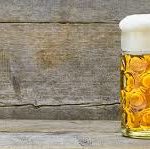
Hopfen und Malz verschwinden auch ohne Fleckensalz, wenn Sie den Bierfleck vor dem Waschen mit warmem, verdünntem Essig einreiben; alte Flecken zunächst mit etwas Glyzerin einweichen. Der Gerstensaft ist dann oft schon nach der ersten Wäsche restlos abgezapft. Und auch dem Reinheitsgebot ist damit Genüge getan.
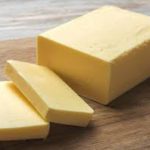
Butter ist ein ganz bequemer Fleckenentferner: Denn Butter ist so leicht zu beseitigen wie Bockwurstsaft und kann sogar dabei helfen, hartnäckige Fett-, Teer- und Harzflecken leichter zu lösen. Streichen Sie dazu etwas Butter auf diese Flecken. Nach dem Einwirken können Sie den Fleck abkratzen und abschließend einfach wie auch normales Fett mit etwas Hausbenzin abtupfen.
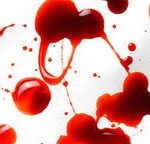
Wenn Sie Blut sehen, leisten Sie folgende erste Hilfe: Sofort mit kaltem Wasser auswaschen, und dann in Salzwasser einweichen. Bei alten Flecken hilft vor dem Waschen etwas verdünnter Salmiakgeist - gegen jede Blutgruppe.
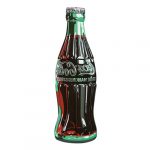
Frische Flecken des braunen Erfrischungsgetränks lösen sich normalerweise schon bei der ersten Wäsche auf. Gegen alte Flecken hilft zunächst etwas Feinwaschmittel auf dem Fleck und dann Mineralwasser als "Lösungsmittel".
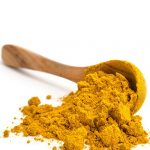
Bei falscher Behandlung entwickelt sich die feine Würze schnell zu einem harten Problem. Deshalb bearbeiten Sie Curry zunächst wie Mayonnaise und Senf: Spülen Sie den Fleck erst mit lauwarmem Wasser, und reiben Sie anschließend die Stelle mit Glyzerin ein, oder nehmen Sie bei empfindlichen Stoffen Kölnisch Wasser, Spiritus oder Weingeist.
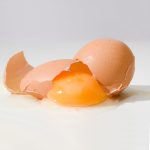
Verreiben Sie das Ei nicht, sondern streuen Sie Salz darüber. Den getrockneten Fleck können Sie dann ausbürsten und mit kaltem Wasser abtupfen. Wenn das Gelbe und das Weiße vom Ei anschließend immer noch zu sehen sind, empfiehlt sich verdünnter Salmiakgeist.
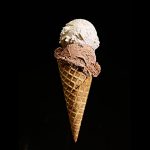
Hier hilft zunächst eine Mischung aus Spiritus und Salmiakgeist auf dem Fleck. Den Rest beseitigen Sie anschließend mit lauwarmem, klarem Wasser.
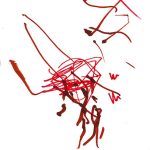
Die Spuren eines Filzstiftes sind - wie die eines Kugelschreibers - nur schwer zu beseitigen, denn die Farbstoffe bleiben hartnäckig im Stoff. Unterm Strich hilft es, wenn Sie, falls nötig mehrmals, die Farbe vor der Wäsche mit etwas Glyzerin oder Alkohol und Terpentin lösen.
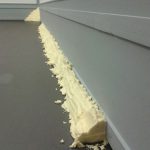
Die Fettreduktion gehört zu den einfachen Kapiteln der Fleckenentfernung. Meist genügen etwas Spülmittel oder warmes Seifenwasser und eine Maschinenwäsche. Dabei empfiehlt sich der Einsatz eines Flüssigwaschmittels, das mehr Tenside enthält als pulverförmiges Waschmittel und dadurch Fett besonders gut entfernt. Ein altes Hausmittel ist auch Kartoffelmehl, mit dem das Fett zunächst aufgesaugt und dann ausgebürstet wird. Ist der Fleck dann immer noch nicht weg, helfen z.B. Kristallsodawasser oder eine Abreibung mit Seife und eine folgende möglichst heiße Wäsche. Alternativ wirken auch Weingeist, Alkohol oder Seifenspiritus. Lediglich Wolle kann mit Benzin vorbehandelt werden.

Begießen Sie den Fleck zunächst mit etwas Mineralwasser, und waschen Sie das Kleidungsstück anschließend normal in der Maschine. Gegen hartnäckige Flecken hilft zusätzlich etwas flüssiges Feinwaschmittel vor der Wäsche.
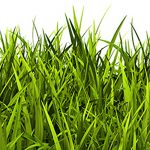
Grasflecken sind oft sehr hartnäckig. Für die Biologieinteressierten: es liegt an dem Pflanzenfarbstoff Chlorophyll, der chemisch verwandt mit dem roten Blutfarbstoff Hämoglobin ist. Er ermöglicht den Pflanzen die Photosynthese und damit die direkte Nutzung der Sonnenenergie. Man/Frau sollte den Fleck möglichst nicht eintrocknen lassen. Mit Gallseife oder flüssiger Seife vorbehandeln, dann auswaschen. Weiße Stoffe und unempfindliche Stoffe können nachher mit Bleichmitteln weiterbehandelt werden. Ein anderer Tipp: Reiben mit Zitronensaft oder Spiritus.
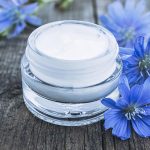
Gegen fettige Hautcreme helfen zunächst die gleichen Lösungsmittel wie bei Butter. Für die Farbreste ist ein zusätzliches Bleichmittel das Beste. Auch Waschbenzin hilft gegen Hautcreme - aber besser nicht auf der Haut, sondern nur auf der Kleidung.

Milch im Kaffee, betupfen Sie die braune Stelle zuerst mit kaltem Wasser. Anschließend tupfen Sie warmes Glyzerin auf den Fleck, und waschen Sie ihn mit warmen Wasser aus. Möchten Sie zusätzlich etwas Seife nehmen, greifen Sie nur zu Gallseife. Damit reduzieren Sie auch auf Samt und Seide Kaffeespuren. War der Kaffee schwarz, behandeln Sie den Fleck zunächst mit lauwarmem Seifenwasser. Bei alten Kaffeeflecken reichern Sie die Lauge mit einer Prise Salz an, und decken den Fleck anschließend mit Glyzerin und Eigelb ein. Spülen Sie nach einer halben Stunde das Gemisch erst mit kaltem und dann mit lauwarmem Wasser aus. Bei farbigen, waschbaren Stoffen hilft ein Milchbad. Sobald die Milch sauer geworden ist, waschen Sie den Fleck mit lauwarmem Wasser aus.
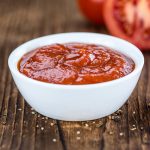
Mittlerweile neben roter auch in grüner und gelber Farbe erhältlich, besteht Ketchup, oder sollte zumindest, zu einem gewissen Grad aus sonnengereiften Tomaten. Nebst Zucker, Essig, Aroma- und Farbstoffen. Wegen eben dieser Zusatzstoffe ist der Ketchupfleck auch nicht genauso zu behandeln wie der Tomatenfleck. Nach dem Einweichen im lauwarmen Wasser sollte er entweder mit Glycerin oder Spiritus eingerieben werden, bevor das Kleidungsstück dann wieder in kaltem Wasser ausgespült wird.
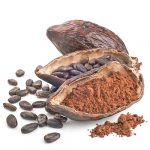
Kakaoflecken brauchen die gleiche Behandlung wie Milch: erst kaltes, dann warmes Wasser. Auf keinen Fall umgekehrt, denn sonst wird der Fleck unangenehm. Weichen Sie die Kleidung anschließend in Salzwasser ein. Sollten nach dem Waschen immer noch Kakaospuren zu sehen sein, betupfen Sie den Fleck mit dem ungesalzenen Kochwasser von Kartoffeln. Bei empfindlichen Stoffen legen Sie den Fleck so lange in Milch ein, bis diese sauer wird, und spülen anschließend den Fleck erst mit kaltem und dann mit heißem Wasser aus.
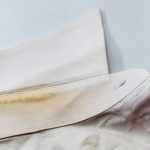
Der Kragen ist die Visitenkarte einer guten Kleidung. Deshalb gibt es für die Behandlung dieser Region Handwaschmittel in praktischer Tubenform, die auch im Reisegepäck noch Platz finden.
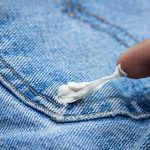
Führen Sie den Kaugummi zunächst in seinen ursprünglichen Zustand zurück: Härten Sie ihn durch eine Abkühlung im Gefrierfach. Danach läßt sich der Fleck leicht abkratzen oder ausbürsten. Zusätzlich können Sie die Reinigung mit etwas Alkohol verstärken.
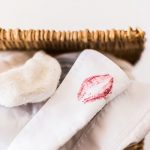
Nach der ersten Wäsche ist meistens alles vorbei. Sie können die Spurenbeseitigung zusätzlich unterstützen, indem Sie vorher den Fleck mit Eukalyptusöl oder Glyzerin aufweichen. Hartnäckige Lippenbekenntnisse können Sie leicht mit verdünntem Salmiakgeist entfernen.
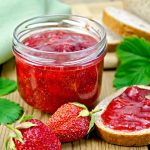
Hier genügt meistens ein Lappen und warmes Wasser. Bei hartnäckigem Brotaufstrich verstärken Sie Ihre Fleckenbekämpfung mit einer Seifenlauge oder etwas Alkohol.
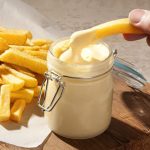
Mayonnaise wird schnell ein großes Problem, wenn Sie den Klecks falsch behandeln. Tupfen Sie zunächst lauwarmes Wasser auf die Stelle oder entfernen Sie das Gröbste mit einem Messer. Anschließend tupfen Sie Glyzerin auf den Fleck, bei Samt und Seide Kölnisch Wasser, Spiritus oder Weingeist. Sind nach der nächsten Wäsche immer noch Spuren zu sehen, nehmen Sie verdünnten Salmiakgeist zur Nachbehandlung.

Behandeln Sie den Fleck erst mit kaltem Wasser, dann heiß auswaschen. Lauwarmes Wasser brauchen Sie nur für Samt und Seide.
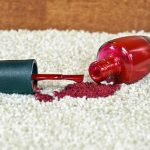
Lack auf der Kleidung entfernen Sie mit heißem Spiritus oder Aceton. Wobei Aceton nicht für empfindliche und synthetische Stoffe geeignet ist.

Ist meistens kein großes Problem, wenn Sie den Fleck vor der nächsten Wäsche mit etwas Fleckensalz bestreuen. Ist der Fleck immer noch sichtbar, betupfen Sie die Stelle mit warmem Alkohol, Essig oder Zitronensaft. Alte Obstflecken entfernen sich oft bereits nach einem mehrstündigen Bad in Buttermilch mit einem Schuß Zitronensaft. Bei empfindlichen Stoffen wirken auch Salmiakgeist und Seifenspiritus. Einige Früchtchen brauchen allerdings eine gesonderte Behandlung: Pfirsiche, Orangen und Erdbeeren, Heidelbeeren, Kirschen.
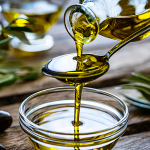
Öl bekämpfen Sie wie Fett. Die Fettreduktion gehört zu den einfachen Kapiteln der Fleckenentfernung. Meist genügen etwas Spülmittel oder warmes Seifenwasser und eine Maschinenwäsche. Dabei empfiehlt sich der Einsatz eines Flüssigwaschmittels, das mehr Tenside enthält als pulverförmiges Waschmittel und dadurch Fett besonders gut entfernt. Ein altes Hausmittel ist auch Kartoffelmehl, mit dem das Fett zunächst aufgesaugt und dann ausgebürstet wird. Ist der Fleck dann immer noch nicht weg, helfen z.B. Kristallsodawasser oder eine Abreibung mit Seife und eine folgende möglichst heiße Wäsche. Alternativ wirken auch Weingeist, Alkohol oder Seifenspiritus. Lediglich Wolle kann mit Benzin vorbehandelt werden.

Die Spuren edler Essenzen "verduften" am besten mit reinem Alkohol. Auf Seide können die Spuren eines betörenden Duftes die Farben zerstören.

Gegen Rotwein hilft Weißwein. Auch Sherry oder klarer Alkohol bekämpfen den Fleck hochprozentig sicher. Aber das beste Mittel gegen den edlen Traubensaft ist und bleibt eine große Prise Salz. Auf jeden Fall ist es ratsam, sich dem Fleck so schnell wie möglich zu widmen. Ehe Sie die Waschmaschine einschalten, empfiehlt sich noch ein Spritzer Zitronensaft auf dem Fleck. Ist er anschließend nicht weg, legen Sie den Stoff vor der nächsten Wäsche über Nacht in Buttermilch. Wenn das auch nicht hilft, versuchen Sie es zum Schluß mit Glyzerin. Samt und Seide vertragen keine Salz- und Weißweinbehandlung, sondern lassen nur Mais- oder Kartoffelmehl zu. Gegen verbliebene Rotweinreste helfen dann verdünnter Salmiakgeist, Weingeist oder Seifenspiritus.
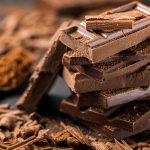
Kratzen Sie den Fleck zunächst mit einem Messer an. Mischen Sie Alkohol oder Glyzerin mit einem Eigelb, und lassen Sie das Ganze auf der braunen Stelle kurz einwirken. Waschen Sie den Stoff anschließend in einer warmen Seifenlauge. Alternativ können Sie den Fleck auch in Milch einweichen und nach einiger Zeit auswaschen.
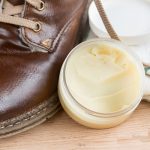
Dagegen hilft Terpentin relativ zuverlässig. Wenn nicht, versuchen Sie es mit einer Mischung aus Seifenspiritus und Salmiakgeist. So empfindliche Stoffe wie Samt und Seide vertragen kein Terpentin, sondern besser eine Behandlung mit Spiritus und anschließend mit stark verdünntem Salmiakgeist.
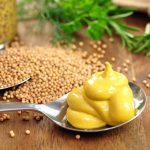
Bearbeiten Sie den Senffleck zunächst mit warmer Seifenlauge. Sollte er anschließend immer noch zu sehen sein, versuchen Sie es mit Wasser und einem Schuß Salmiakgeist. Danach hilft nur noch Glyzerin. Allerdings nicht auf Samt und Seide. Hier sollten Sie wie bei Mayonnaise- und Curry-Flecken nur sanft mit Kölnisch Wasser oder etwas Spiritus vorgehen.
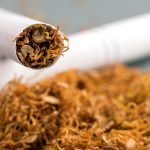
Gegen vergilbte Tabakspuren hilft das Gelbe vom Ei zusammen mit einer Mischung aus Spiritus oder Weingeist. Alternativ wirkt auch etwas Glyzerin. Das gewählte Mittel wird nach ca. einer Stunde mit klarem Alkohol ausgespült. Ältere Flecken können Sie vor der o.g. Behandlung auch mit Zitronensäure anfeuchten.
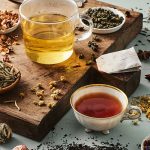
Nutzen Sie möglichst schnell warmes Wasser zur ersten Behandlung des Teeflecks. Als Unterstützung hilft Ihnen dabei Gallseife im Wasser. Für hartnäckige Flecken empfiehlt sich eine Mischung aus Glyzerin und Eigelb, die man nach ca. einer Stunde auswaschen sollte.

Die Tomate, die nur noch zu einem sehr geringen Anteil als erkennbar ganze Frucht den Weg zum Endverbraucher findet, sondern sich immer häufiger in enge Ketchup-Flaschen pressen lassen muss oder als Pizzabelag umgeformt wird, ist in reiner Form kein großer Feind der Textilien. Dem gemeinen Tomatenfleck ist sehr leicht der Garaus zu machen, indem man ihn im lauwarmen Wasser ausspült und anschließend in einer Waschmittellauge einweicht. Eventuell dem Wasser auch noch Wasserstoffperoxid hinzufügen.
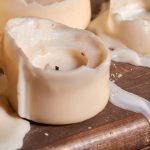
Wachsflecken können Sie leicht ausbügeln: Kratzen Sie zunächst vorsichtig die gröbsten Wachsreste ab. Legen Sie anschließend den befleckten Stoff zwischen Lösch- oder Küchenpapier, und bügeln Sie bei niedriger Temperatur von innen nach außen über das Wachs. Wechseln Sie öfter das Papier. Wenn abschließend noch Farbreste zu sehen sind, betupfen Sie die Stelle mit Spiritus.

Weißwein sollte nicht lange lagern, bevor er beseitigt wird. Spülen Sie ihn direkt mit heißem Wasser aus. Um die Feuchtigkeit anschließend besser aufzusaugen, bestreuen Sie den Fleck großzügig mit Salz - ein Rezept, das sich auch als erfolgreiches Gegenmittel bei Rotwein bewährt hat.
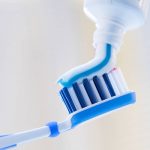
Auf der Kleidung beseitigen Sie Zahnpasta wie auf den Zähnen: Einfach kräftig mit lauwarmem Wasser ausspülen.

Sie sollten schnell handeln. Mit warmem Wasser löst sich ein klebriger Fleck sehr leicht. Ältere Flecken brauchen Unterstützung durch eine Mischung aus Salmiakgeist und Glyzerin. Bei gefärbten Süßigkeiten gibt es einen anderen Tip: Zitronenwasser.